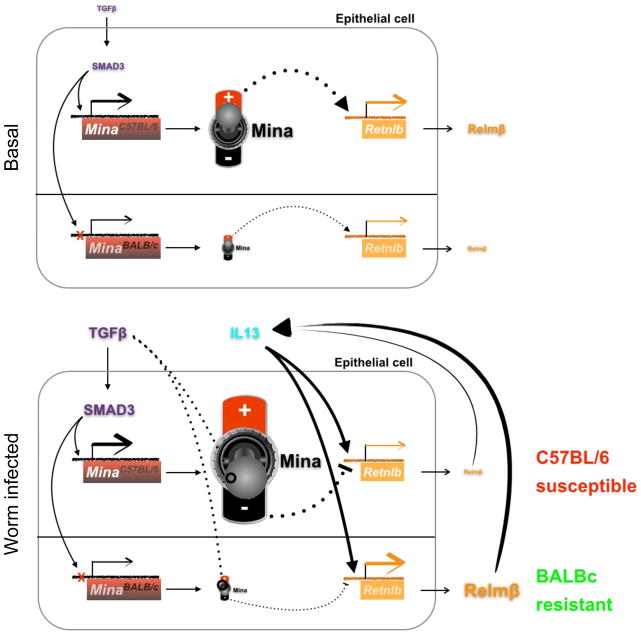Figure 1. Shown is a model of TGFβ promoting Mina gene expression and switching Mina from acting as an enhancer to a repressor of Retnlb, encoding the pro-expulsatory cytokine Relmβ.
SNP rs4857304 (red X, shown for visual clarity upstream of the TSS) in Mina enhancer 2 renders the C57BL/6 but not the BALB/c allele of Mina sensitive to TGFβ/SMAD3-dependent activation. Under basal conditions (top) the relatively low level of TGFβ present is insufficient to toggle Mina activity from an activator to a repressor of Retnlb transcription. Together, these conspire to elevate expression of both Mina and Retnlb in epithelial cells from C57BL/6 as compared to BALB/c. Following parasitic worm infection (bottom), two parameters change. The first change is an increase in TGFβ level. This switches Mina from an activator to a repressor of Retnlb. The second change is the initiation of a Th2 response whose constituent IL13 elevation independently promotes Retnlb transcription. This has the potential to establish a positive feedback loop as Relmβ promotes the Th2 response. The net result is that in C57BL/6 cells expressing a high level of — now repressive — Mina, Retnlb expression is greatly attenuated. By contrast, the low level of repressive Mina in BALB/c cells is insufficient to attenuate IL13-induced Retnlb expression. Thus, in worm infected animals Relmβ level is high in BALB/c and low in C57BL/6, likely contributing to the enhanced resistance to Trichuris muris of BALB/c relative to C57BL/6. Dashed lines represent mRNA transcripts. Solid and dotted lines represent, respectively, direct and indirect effects.

